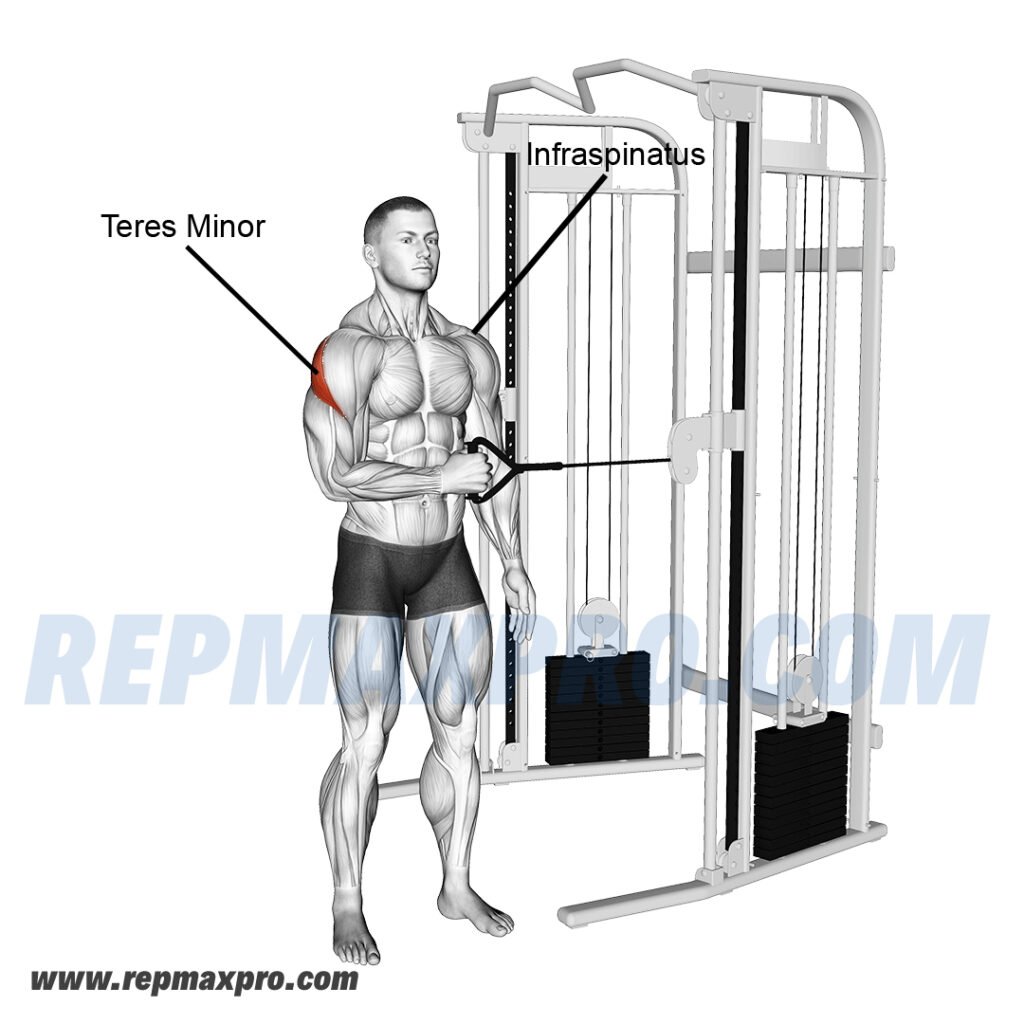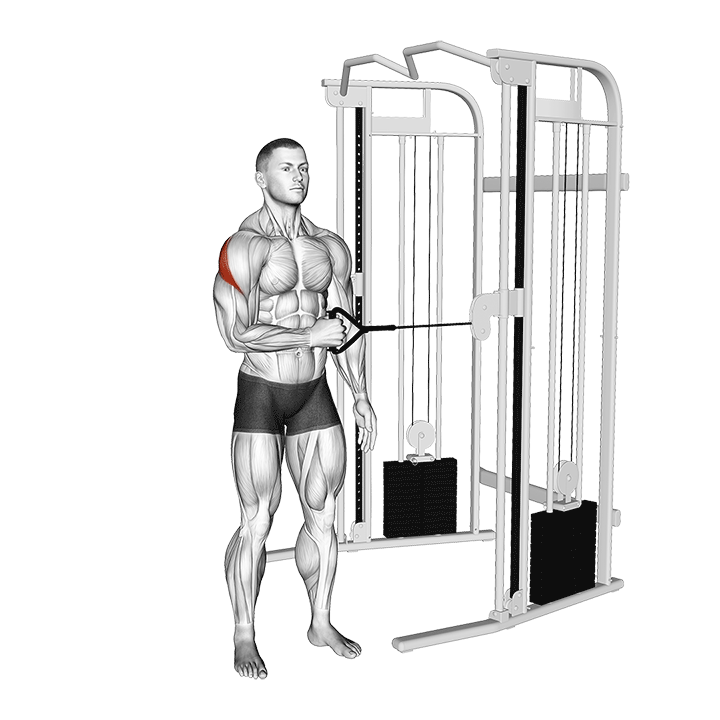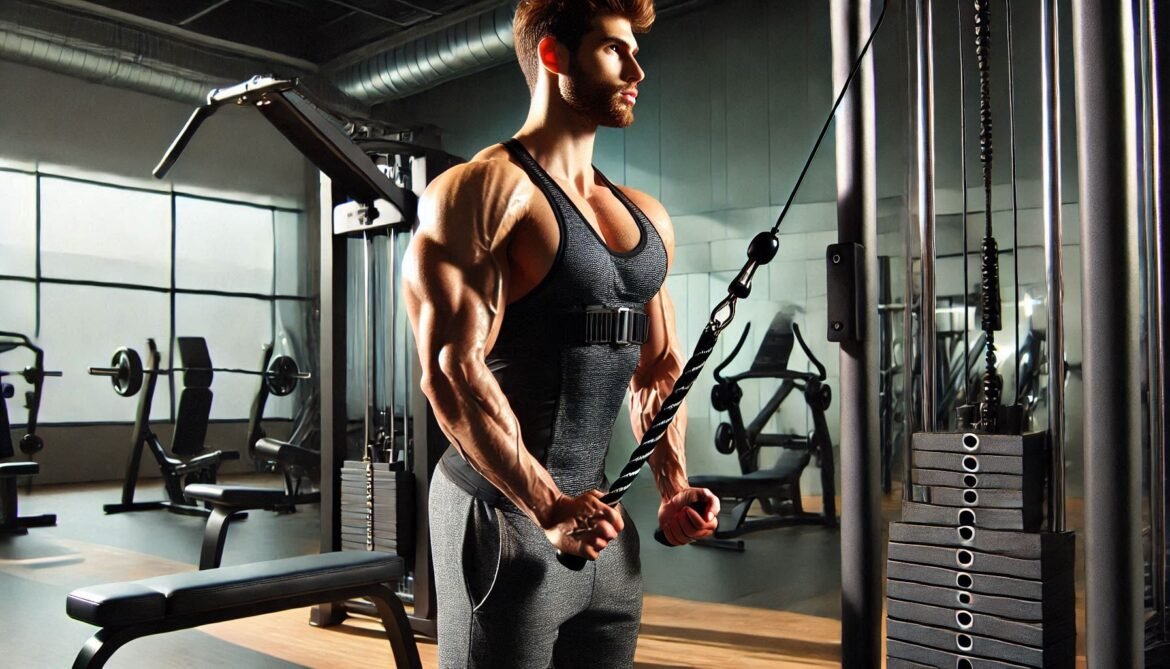Shoulder External Rotation with Cable
Shoulder external rotation with a cable is a crucial exercise for strengthening the rotator cuff muscles, which play a vital role in shoulder stability and injury prevention. This exercise specifically targets the smaller, often overlooked muscles that are essential for healthy shoulder function. Whether you’re an athlete looking to improve performance, someone recovering from a shoulder injury, or simply aiming to maintain shoulder health, the shoulder external rotation with cable is an invaluable addition to your workout routine.
Targeted Muscle Groups

Primary Muscles:
- Infraspinatus: This rotator cuff muscle is primarily responsible for the external rotation of the shoulder and is heavily engaged during this exercise.
- Teres Minor: Another muscle of the rotator cuff, the teres minor works alongside the infraspinatus to rotate the arm externally.
Secondary Muscles:
- Supraspinatus: While its primary function is to assist with the abduction of the arm, the supraspinatus also stabilizes the shoulder joint during external rotation.
- Posterior Deltoid: The rear part of the shoulder muscle assists in external rotation and helps maintain shoulder stability.
- Rhomboids and Trapezius: These muscles help stabilize the shoulder blade, ensuring smooth and controlled movement during the exercise.
- Core Muscles: Engaging your core helps maintain posture and balance, particularly when standing.
Equipment Needed
- Cable Machine: A cable machine with an adjustable pulley is ideal for this exercise, allowing you to adjust the height and resistance according to your needs.
- D-handle Attachment: This handle attachment provides a comfortable grip and allows for smooth rotation during the exercise.
How to Perform Shoulder External Rotation with Cable: Step-by-Step Guide
1. Setup:
- Attach the D-handle to a cable machine set at about waist height.
- Stand perpendicular to the machine with your non-working side closest to the machine.
- Grasp the handle with your working hand, keeping your elbow bent at 90 degrees and tucked into your side. Your forearm should be across your abdomen, with your palm facing inward.

Shoulder External Rotation with Cable
Illustration credit © Aliaksandr Makatserchyk
2. Starting Position:
Position your feet shoulder-width apart and keep your knees slightly bent to ensure stability.
Activate your core to uphold a straight posture and minimize unnecessary motion throughout the exercise.
3. External Rotation Movement:
- Inhale and slowly rotate your forearm away from your body, keeping your elbow fixed in place at your side.
- Rotate until your forearm is aligned with your torso, or slightly past it, depending on your range of motion.
4. Hold and Squeeze:
- At the end of the rotation, pause briefly and squeeze the muscles in your shoulder to maximize engagement.
5. Return to Starting Position:
- Exhale as you slowly return your forearm to the starting position, maintaining control and keeping tension on the rotator cuff muscles.
6. Repetition:
- Complete the target number of repetitions, then switch to the opposite arm.
Recommended Reps and Sets
- For Strength and Stability: 3-4 sets of 8-12 reps per arm
- For Injury Prevention or Rehabilitation: 2-3 sets of 12-15 reps per arm, with lighter weight and more focus on form
Rest for 30-60 seconds between sets, allowing the muscles to recover while maintaining tension.
Pro Tips for Success
- Keep Your Elbow Tucked: Keeping your elbow close to your side ensures that the rotation movement is isolated to the shoulder joint, maximizing the effectiveness of the exercise.
- Use Light Weights: The rotator cuff muscles are smaller and more susceptible to strain, so using lighter weights is crucial to avoid injury and ensure proper form.
- Control the Movement: Focus on slow, controlled movements to fully engage the rotator cuff muscles and avoid using momentum.
- Maintain an Upright Posture: Engage your core and avoid leaning or twisting your torso. This will help isolate the shoulder and prevent compensatory movements.
- Warm Up First: Before performing this exercise, it’s essential to warm up the shoulder joints with light cardio or dynamic stretches to prevent injury.
Common Mistakes to Avoid
- Using Too Much Weight: Using excessive weight can negatively impact your form and elevate the likelihood of injury. Begin with a comfortable weight and progressively add more as your strength develops.
- Flaring the Elbow: Allowing your elbow to move away from your side during the rotation can reduce the effectiveness of the exercise and strain the shoulder joint. Keep your elbow tucked in at all times.
- Leaning or Twisting the Torso: Twisting your body to complete the movement shifts the focus away from the rotator cuff muscles and reduces the exercise’s effectiveness. Keep your torso stable and straight.
- Rushing the Movement: Performing the exercise too quickly reduces time under tension, which is crucial for strengthening the rotator cuff. Focus on slow, deliberate movements.
- Neglecting the Full Range of Motion: Not fully rotating your arm can limit muscle engagement. Aim for a full range of motion without forcing the joint past its natural limits.
The shoulder external rotation with cable is a vital exercise for strengthening the rotator cuff, improving shoulder stability, and preventing injuries. Whether you’re an athlete, recovering from a shoulder injury, or simply looking to maintain healthy shoulder function, this exercise should be a key component of your workout routine. By focusing on proper form, controlled movements, and gradual progression, you can effectively target and strengthen the crucial muscles that support shoulder health.
